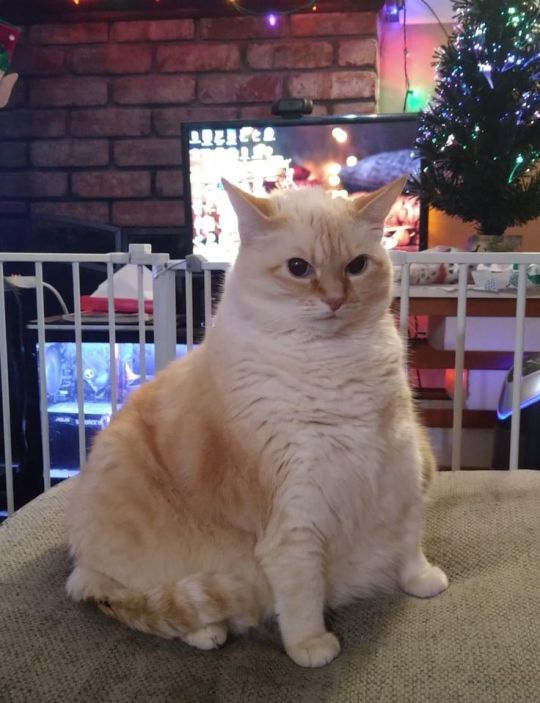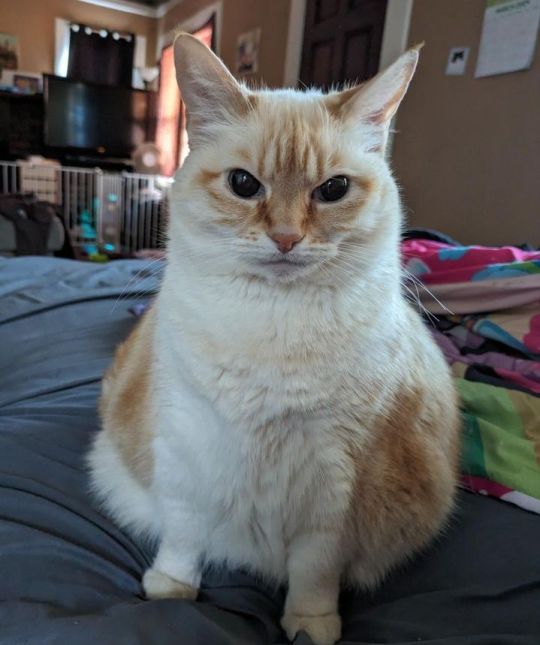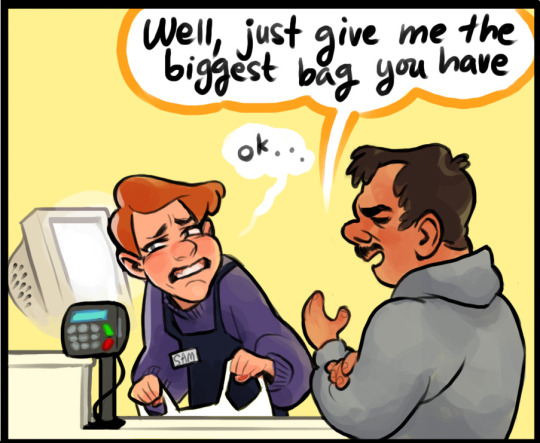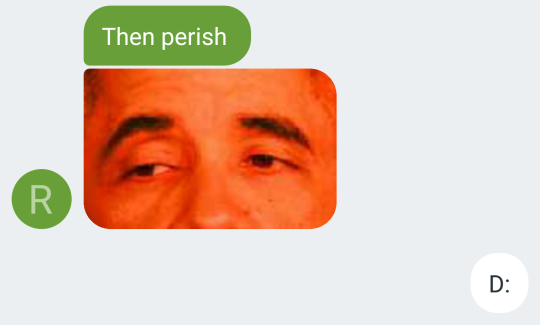I mainly just reblog posts 6/7/06
Last active 60 minutes ago
Don't wanna be here? Send us removal request.
Text
2K notes
·
View notes
Text
new emotes for vampires
>,..,<
^,..,^
u,..,u
>//,..,//<
@,..,@
4K notes
·
View notes
Text
Writing Notes: Clothing Textures

When you think of textured clothing, you might imagine a scratchy wool sweater or a soft fur coat, but every clothing item has some kind of texture. The texture of fabric is often determined by the type of weave, so it’s a good idea to get to know the 3 major weave types:
Twill: The distinguishing characteristic of the twill weave is its diagonal rib pattern. Twill weaves have a distinct, often dark-colored front side (called the wale) and a lighter back. Twill has high thread count, which means that the fabric is opaque, thick, and durable, making it perfect for chinos, upholstery, and bed linens. Denim is a twill weave fabric, as are tweed and houndstooth.
Satin weave: The satin weave creates a fabric that is shiny, soft, and elastic with a beautiful drape. Satin fabric has a lustrous surface on one side and a dull, matte surface on the other side. Satin is perfect for haute couture-style dresses and clutches.
Plain weave: Plain weave fabrics, including canvas, taffeta, and muslin, are made by overlapping the warp and weft (vertical and horizontal threads) at right angles. This forms a criss-cross pattern that looks the same on both sides of the fabric.
Common Fabric Textures
The types of fabric you’ll encounter when looking for different textures include:
Denim is a strong cotton fabric with a twill weave that gives it a subtle diagonal ribbing pattern. The diagonal ribbing is what makes denim fabric different from canvas or cotton duck, which are also sturdy, woven cotton fabrics.
Broadcloth is a plain-weave fabric that is traditionally woven from thick wool yarn—the fibres of which felt together as the cloth is made. Broadcloth is sturdy, stiff, and resistant to wind and water.
Seersucker is a type of thin cotton cloth. The way it is woven causes the threads to pucker and bunch, creating crinkles. Seersucker often comes in narrow white and blue stripes and is popular in summer fashion.
Corduroy is a soft, durable fabric. It is distinctive for the tufted cords—called “wales”—that run in parallel along its surface. Corduroy is typically made from cotton, but it can also be made from wool.
Leather is any fabric that is made from animal hides or skin, with cowhide being the most popular.
Suede is a type of leather made from the soft underside of an animal skin. It is softer, thinner, and more delicate than traditional full-grain leather. Suede is ideal for footwear, jackets, and accessories like belts and bags.
Brocade is a particular style of jacquard fabric that uses additional threads to create a raised pattern, resulting in an embossed or embroidered effect. Due to the technique used to make it, brocade fabric is not reversible, and it may appear rough or unfinished on the underside.
Silk is a natural fiber produced by the silkworm. Silk is incredibly durable, with a shine and softness that are unmatched. Silk fabric is used for formal attire and accessories like pocket squares.
Cashmere is a type of fabric made from the wool of cashmere goats and pashmina goats. Cashmere is a natural fiber with an extremely soft feel and great insulation. Cashmere is significantly warmer and lighter than cloth made from sheep’s wool. Often, cashmere is blended with other types of wool, like merino, to give it added weight, since cashmere fibers are very fine and thin.
Jersey is a soft, stretchy knit fabric that was originally made from wool. Today, jersey is also made from cotton, cotton blends, and synthetic fibers. The fabric is usually light-to-medium weight and is used for a variety of cotton clothing items, such as T-shirts.
Flannel is a soft woven fabric typically made from cotton. It is a common material for plaid shirts.
How to Mix and Match Clothing Textures
Texture is an easy way to add visual interest to an outfit. By layering different textures, you can create a distinct look.
Identify neutral textures. Mixing and matching textures is similar to mixing and matching patterns and prints. In the same way that certain classic prints appear neutral, simple textures can serve as a neutral base for wilder textures. Denim, cotton fabric, leather, and suede are some of the most basic textures that play well with other textures. Neutral textures that are smaller and less visible to the naked eye—like merino wool—pair well with more attention-grabbing textures.
Consider a texture’s typical context. Textures evoke specific moods. Silk lends a luxurious vibe to any outfit. A plaid flannel shirt can look cozy with corduroy, but it becomes more serious when paired with a black leather jacket. Denim is a casual texture you can use to dress down other fabrics: Pair a satin tank with jeans—rather than something like brushed wool trousers—for a relaxed yet stylish look. Think about the context in which you might wear a particular material, then pair that material with other textures to subvert expectations.
Mix textures, match colors. Sticking to a more limited color palette will give you free range to play with different kinds of textures. That doesn’t mean you have to dress in monochrome: You can use neutral colors to anchor your look, or choose two or three solid colors that work together.
Source ⚜ More: Notes ⚜ Writing Resources PDFs ⚜ How to Describe Clothing
4K notes
·
View notes
Text
55K notes
·
View notes
Text
the fat of the land voted “funniest album art” 24th year in a row
84K notes
·
View notes
Text
best thing tumblr ever did for me is the term "rotating it in my mind". it's really true that sometimes you think about something real hard but you can't tell what the thoughts are exactly. it's revolutionary stuff, i might even say
224K notes
·
View notes
Text
I LOVE CATS!!

LOOK AT THIS TRIANGULAR FELLA FULL OF RAGE!

1K notes
·
View notes
Text
353 notes
·
View notes
Text
you guys will reblog anything istg

this is an image with exactly 1x1 pixels. come on, reblog it. i fucking dare you.
18K notes
·
View notes
















